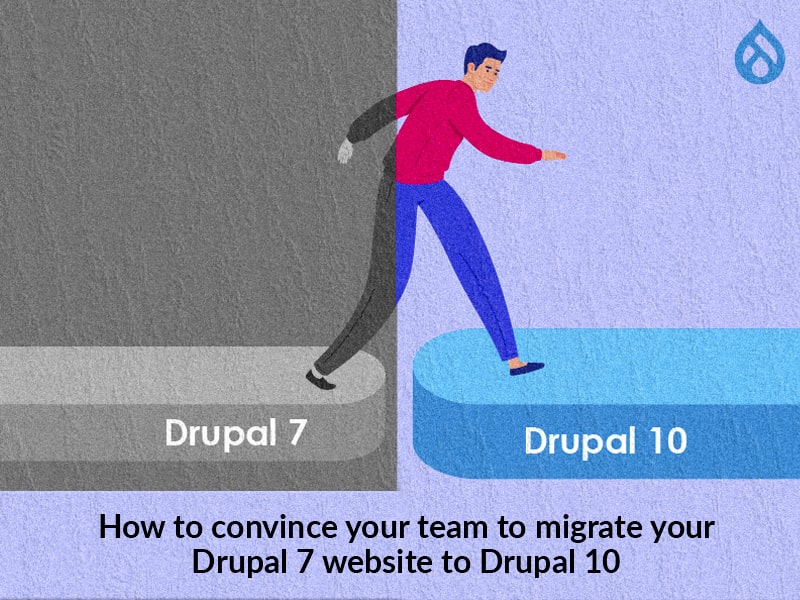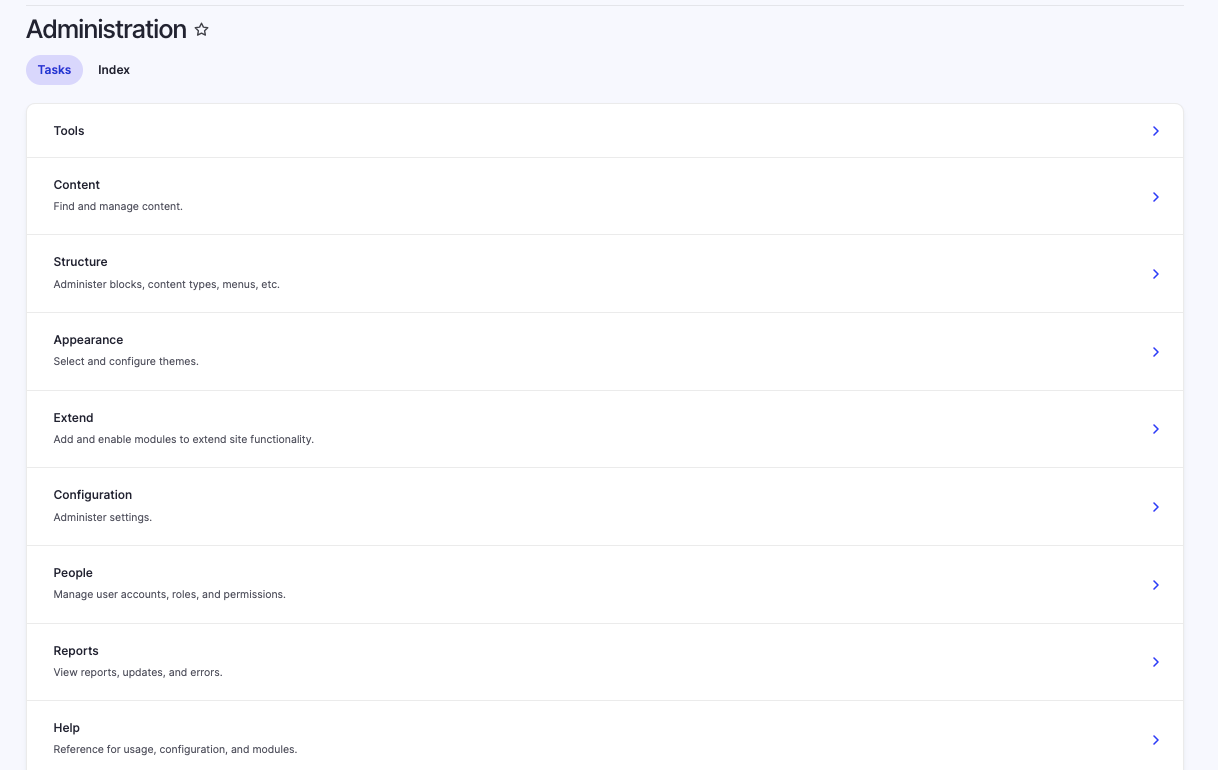I’m assuming you are reading this because you are already convinced that migrating your Drupal 7 site to Drupal 10 is not just a proactive measure but a strategic move for your organization. But to anyone else on your team it looks like an unnecessary big project to rebuild the website when it’ll look and feel the same (we always recommend redesigns or additional features during a D7 to D10 Migration).
We get it. For folks not in the know, this seems like a waste of funds. However, with Drupal 7 coming to an end in about 9 months (January 5th, 2025), the urgency to transition becomes increasingly stressful. We know you know, but you still have your team members (or your boss!) left to convince. Let’s make it easier for you with this article.

Understanding the impact of Drupal 7 End of Life
Before you talk to your team about why you need to migrate to Drupal 10, let’s examine some of the implications of persisting with Drupal 7.
- No more security updates or advisories for core, contributed modules and themes. The Drupal Security Team may publicly post moderate to less critical issues affecting Drupal 7 in the public issue queue for resolution, provided they are not widely exploitable.
- Unsupported Drupal 7 contributed modules or themes won't be eligible for new maintainership or reclassification as supported. If you’re currently using them, it is a good idea to take ownership or be a maintainer of those projects.
- PHP version 5.5 and below will now be supported. This lack of support could lead to compatibility issues, security vulnerabilities, and potential performance drawbacks.
- If your Drupal 7 website is running on Windows, you will no longer receive security fixes for Windows-related issues. It is recommended to move to a different operating system.
- You will no longer receive assistance for tasks associated with Drupal 7, such as documentation navigation, automated testing, packaging, and other related activities.
Making the case for Drupal 7 to 10 migration to your team
Let’s give you some powerful pointers to discuss with your team to get buy-in on the Drupal 7 to 10 migration.
Remarkably Enhanced User Experience for Content Editors and Site Builders in D10
There are 3 things that matter a lot to content editors and site builders :
- User-friendly admin interface - It should allow for efficient content creation, editing, and site management without requiring extensive technical knowledge.
- Customization - This includes options for customizing layouts, adding new features, and integrating third-party tools and services.
- Media management - To upload, organize, and embed images, videos, and other multimedia content within articles.

Claro admin theme
Drupal 10’s new Claro admin theme (a part of core) offers a clean, modern and user-friendly interface to help organize and find what you need easily. Olivero is the new default front-end theme now and it comes with a modern look and feel. The theme integrates seamlessly with all of Drupal’s features and is the most accessible theme (WCAG level AA compliant) till now.
The flexible Layout builder module is now in core and it is now easier to create pages and customize layouts the way you want. The modern and functional media management system makes it simpler to upload, reuse, and manage media assets on your Drupal site.
Optimized Website Performance and SEO Improvements
With every new release, Drupal is getting better at delivering performance. With Drupal 10’s new and improved caching mechanisms, BigPipe technology, optimized codebase, and effective content delivery mechanisms, your website can now load faster and offer a great user experience. It incorporates various enhancements to boost performance in content rendering and HTTP responses. With Drupal 10, you can implement lazy loading for embedded content and responsive images, significantly enhancing load times. Additionally, the introduction of the new JS minification feature dynamically reduces code and markup, thereby further improving performance. The new Single Directory Component (SDC) approach of theming your website is a revolutionary step towards frontend development which also greatly improves website performance by groupong together files necessary to render components (Twig, CSS, JS). And don’t forget, better website performance also means a better SEO ranking on search engines.
Managing Content is Easier
Now that you've settled into using Drupal 7 for a while, you might feel like managing content is pretty straightforward. But hold on – let me tell you about Drupal 10, where things get even smoother and more user-friendly. With Drupal 10, organizing your content consistently becomes much simpler. You can reuse existing fields easily and create new ones more smoothly, all in one place. Editing content is smoother too, with text fields that ensure your text looks just right. Plus, managing older versions of your content, whether it's in blocks or pages, is a breeze with the new unified editing experience. The new CKEditor 5 version offers an enhanced content editing experience. Its features like drag-and-drop image insertion, real-time collaboration, and seamless integration with Drupal's content management system make creating and editing content very simple. Its customizable toolbar allows you to tailor the editing experience to suit your specific needs. You also easily copy and paste content from Word/Google Docs to the editor without worrying about formatting as it automatically removes any markup.
Improved Security
And no, we’re not just talking about the lack of security support for Drupal 7 after Jan 2025. Because of the way it has been built and due to its many modern dependencies, Drupal 10 is now more secure than it has ever been.
As you may already be aware, Drupal has been aligning its release cycles with its dependencies, including PHP and Symfony, since version 8. This means that as PHP versions continue to evolve, older versions like Drupal 7 may become incompatible with the latest PHP releases. This lack of compatibility can leave your Drupal 7 site vulnerable to security risks and other issues. Drupal 10 relies on the latest versions of Symfony (6) and PHP (8.1), making it more secure and better performing.
Twig, Drupal 10's default template engine, not only simplifies the development process but also enhances security by preventing direct database interactions within the code. This prevents vulnerabilities such as cross-site scripting and code injections.
By default, Drupal 10 strengthens website security by suggesting users choose stronger passwords, minimizing unauthorized access risks through parameters like minimum length and complexity.
The Time is Now!
The urgency for you to address the Drupal 7 migration depends on the complexity of your website. The more extensive your site's content and features, the longer the migration process will likely take. It’s going to take even longer if you have many custom modules and features. But you don’t want to rush the process. We have seen (and fixed) a lot of bad migrations (like a lot!), most of them done in haste or without proper planning. With a 9-month window to Drupal 7 end-of-life starting now, we believe this is the optimal time to initiate your migration process. A Drupal 7 to 10 migration is going to be a complete rebuild (which is why it takes time) but once you’re on Drupal 10, future upgrades are going to be very, very easy.
Don’t forget to check out this article that features our Drupal experts discussing what’s new in Drupal 10 in detail. You can even catch up with the video of this panel discussion.
Final Thoughts
If you’re thinking this migration (Drupal 7 to Drupal 10) is going to be your last big transition, you are absolutely right. Because even though Drupal continues to innovate, progress and release further versions, your website will now only need effortless and straightforward upgrades. Yes, upgrades will remain easy forever. So what next? Start looking for a Drupal certified migration partner (like Specbee) and get a site audit (we’ll do it for you for free!) so you know how much time you have to start the migration process.







